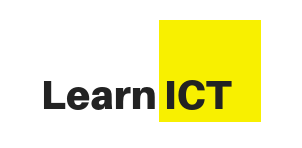What is Back-end development?
Back-end development means working on server-side software, which focuses on everything you can’t see on a website. Back-end developers ensure the website performs correctly, focusing on databases, back-end logic, application programming interface (APIs), architecture, and servers.
why people used back-end development?
People use back-end development to create and manage the server side of web applications. Back-end development is the process of designing and developing the server-side logic and functionality that powers the website or application.
Here are a few reasons why people use back-end development:
1. Data management: Back-end developers create and manage databases that store and manage data used by the application. This includes user data, content, and other information that needs to be stored and accessed by the application.
2. Business logic: Back-end developers are responsible for implementing the business logic of the application. This includes processing user input, generating output, and ensuring that the application functions as expected.
3. Security: Back-end developers implement security measures to protect the application and user data from unauthorized access, hacking, and other security threats.
4. Scalability: Back-end developers design and develop the application to be scalable, meaning that it can handle a large number of users and data without performance issues.
5. Integration: Back-end developers integrate the application with other systems, such as payment gateways, social media platforms, and other third-party services.
Overall, back-end development is essential for creating a robust, secure, and scalable web application that meets the needs of users and businesses.
Where is backend development used?
Back-end development is used in a wide range of industries and applications where there is a need for server-side processing and management of data. Here are some examples of where back-end development is commonly used:
1. E-commerce: Back-end development is essential for e-commerce websites and applications where there is a need for managing customer information, orders, payments, and inventory.
2. Social media: Back-end development is used extensively in social media applications for managing user profiles, messages, notifications, and interactions.
3. Banking and finance: Back-end development is crucial for banking and finance applications, where there is a need for managing user accounts, transactions, and security.
4. Healthcare: Back-end development is used in healthcare applications for managing patient information, medical records, and communication between healthcare providers.
5. Gaming: Back-end development is used in gaming applications for managing user accounts, game states, and multiplayer interactions.
6. Enterprise software: Back-end development is used in enterprise software applications for managing large amounts of data, user accounts, and security.
Overall, back-end development is used in any application where there is a need for server-side processing and management of data.
Top 10 Backend Technologies you must know
1.PHP
PHP (Hypertext Preprocessor) is a popular programming language used for web development. It is open source and runs on the server side, allowing developers to create dynamic web pages and applications. PHP code is embedded into HTML code to add functionality to web pages. PHP has a vast community of developers, and extensive documentation. It is supported by most web hosting providers, making it a popular choice for web development. Thus, the future of PHP development is looked upon by many developers for using it in the best way possible.
2. Python
Python is a high-level, interpreted programming language that is known for its simplicity, readability, and ease of use. It was created by Guido van Rossum and was first released in 1991. Python has become one of the most popular programming languages in the world due to its versatility and wide range of applications, including web development, data analysis, scientific computing, artificial intelligence, machine learning, and more.
Python is an open-source language, which means that its source code is freely available and can be modified and distributed by anyone. It is also platform-independent, which means that it can run on various operating systems such as Windows, macOS, Linux, and others.
Python has a large and active community of developers who contribute to its growth and development by creating libraries, frameworks, and tools that make it easier to use and more powerful. Some of the most popular libraries and frameworks in Python include NumPy, Pandas, TensorFlow, Django, Flask, and more.
3. JavaScript
JavaScript is a programming language used to create interactive and dynamic websites. It was first created in 1995 by Brendan Eich while he was working at Netscape Communications Corporation. Initially, it was used for simple tasks like form validation and mouse rollover effects. However, over the years, JavaScript has evolved to become a powerful and versatile language capable of building complex web applications.
JavaScript is a client-side language, meaning it runs on the user’s computer, rather than on the server. This allows web developers to create rich, interactive experiences for their users, such as pop-up messages, animations, and drag-and-drop interfaces.
In addition to its use in web development, JavaScript can also be used on the server side, thanks to technologies like Node.js. This has opened up new possibilities for using JavaScript to build full-stack web applications, as well as for creating other types of software, such as desktop applications and games.
4. Laravel
Laravel is a popular open-source PHP web framework designed for building modern, robust, and scalable web applications. It was created by Taylor Otwell in 2011 and has since become one of the most popular PHP frameworks, with a large and active community of developers.
Laravel offers a wide range of features, including a simple and elegant syntax, built-in authentication and authorization, database migrations and seeding, powerful routing, and flexible templating options, among others. It also supports a variety of popular databases, including MySQL, PostgreSQL, SQLite, and SQL Server.
One of the key strengths of Laravel is its focus on developer productivity and ease of use. It provides a rich set of tools and conventions that allow developers to quickly build and deploy web applications without getting bogged down in tedious or repetitive tasks.
Overall, Laravel is a powerful and versatile PHP framework that can help developers build high-quality web applications quickly and efficiently.
5. Django
Django is a high-level web framework written in Python that enables developers to build complex, database-driven websites, and web applications quickly and easily. It follows the model-view-controller (MVC) architectural pattern and emphasizes reusability, modularity, and the principle of “don’t repeat yourself” (DRY).
Django provides a wide range of built-in features and tools, including an Object-Relational Mapping (ORM) system that allows developers to interact with databases using Python code, a powerful URL routing system, a template engine for rendering HTML, a built-in administration interface, and built-in support for handling user authentication and authorization.
Django’s popularity has grown rapidly over the years due to its ease of use, flexibility, and scalability. It is used by companies of all sizes, from small startups to large enterprises, and is especially popular in the fields of content management, e-commerce, and social networking.
6.MongoDB
MongoDB is a popular open-source, document-oriented NoSQL database management system (DBMS) that provides high scalability, high performance, and high availability. MongoDB stores data in flexible JSON-like documents, making it easy to store and manipulate data that may have a dynamic schema. This allows developers to store, retrieve, and manipulate data in a way that is natural for the application.
MongoDB is designed to be distributed, meaning that it can be deployed across multiple servers and data centers, making it an excellent choice for applications that need to scale horizontally. It also offers advanced features like sharding, replication, and auto-scaling, which make it easy to handle large and complex data sets.
MongoDB provides a powerful query language and a rich set of APIs, which enable developers to work with the database using a variety of programming languages, including JavaScript, Python, and Ruby. Additionally, it offers a number of tools and utilities to help developers manage and monitor their MongoDB databases.
7.MySQL
MySQL is an open-source relational database management system (RDBMS) that is widely used for managing structured data. It is a popular choice for web applications because of its high performance, reliability, and scalability. MySQL uses a client-server architecture, where the database is stored on a server and accessed by clients over a network.
MySQL supports a wide range of features, including transactions, stored procedures, triggers, views, and more. It uses a SQL (Structured Query Language) interface for interacting with the database. MySQL is often used in conjunction with PHP, a popular server-side scripting language, to create dynamic web applications.
MySQL is used by many well-known companies, including Facebook, Twitter, and YouTube, as well as by many small businesses and individual developers. It is available for free under the GNU General Public License (GPL), although commercial licenses are also available for those who need additional features or support.
8. Apache
Apache refers to the Apache Software Foundation, which is a non-profit organization that develops and supports various open-source software projects. One of their most well-known projects is the Apache HTTP Server, commonly referred to as “Apache,” which is a web server software that allows computers to serve content over the internet.
Apache HTTP Server is one of the most widely used web servers in the world, and it runs on various operating systems, including Linux, macOS, and Windows. It is known for its flexibility, security, and robustness, and it supports many features such as SSL/TLS encryption, virtual hosting, and URL rewriting.
Apart from Apache HTTP Server, the Apache Software Foundation also supports many other software projects, such as the Apache Tomcat application server, the Hadoop distributed data processing framework, and the Spark big data processing engine, among others.
9. NGINX
NGINX (pronounced “engine X”) is a high-performance web server and reverse proxy software. Originally created by Igor Sysoev in 2004, it has since become one of the most widely used web servers on the internet, serving over 400 million websites worldwide.
NGINX is known for its efficiency in handling concurrent connections and high-traffic loads, making it a popular choice for websites and applications with heavy traffic. It can handle static and dynamic content, proxy requests to other servers, and act as a load balancer to distribute traffic across multiple servers.
In addition to its performance and scalability, NGINX is also known for its flexible configuration options and ability to integrate with a wide range of software applications and systems. It is open-source software and is available for free under a BSD-like license.
10. Docker
Docker is a containerization platform that allows developers to package an application and its dependencies into a single unit called a container. Containers are lightweight, portable, and isolated environments that provide a consistent runtime environment for applications to run in.
Using Docker, developers can easily create, deploy, and run applications on any platform or infrastructure, regardless of the underlying hardware or software stack. Docker simplifies the process of building, shipping, and running applications, making it easier for teams to collaborate, test, and deploy software.
Docker uses a client-server architecture, where the Docker client communicates with the Docker daemon, which manages the creation, deployment, and execution of containers. Docker images are used to create containers, and they can be built and shared easily using Docker Hub or other container registries.
Overall, Docker is a powerful tool for software development and deployment, helping developers and operations teams to streamline their workflows and increase productivity.
Conclusion
In conclusion, keeping up with the latest backend technologies is crucial for any developer. The Top 10 Backend Technologies you must know include Node.js, Django, Ruby on Rails, Laravel, Spring, Express.js, Flask, ASP.NET, Phoenix, and Hibernate. These technologies offer a range of benefits, such as scalability, flexibility, and ease of use, and can help developers build robust and efficient backend systems. It’s important to choose the right technology for your project based on your specific needs and requirements.




